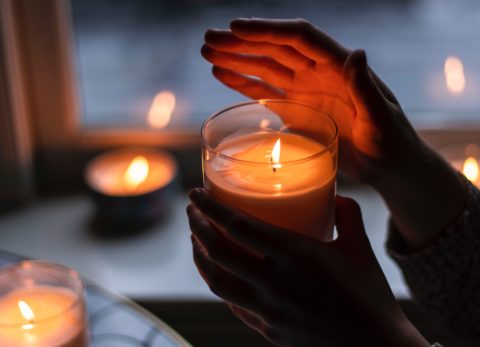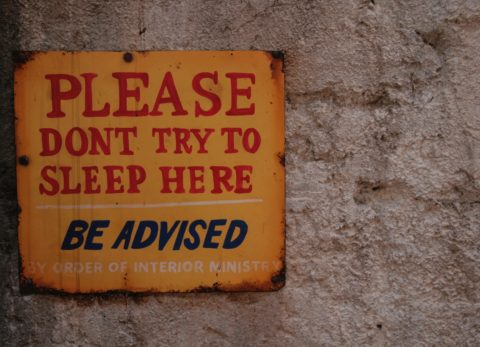Posted on January 31, 2022 by Jenn Zatopek
We live in extraordinary times of great change, reminding us we are embodied creatures, spirit and matter coalescing in a wondrous kaleidoscope of lived experiences, hidden dreams, inchoate longings, and windswept memories. We are not just our thoughts and feelings but beings whose lives are meant to fully inhabit and accept all our experiences, including our traumatic ones.
And trauma is everywhere, held in our hearts and in the global community too. We experience the impact of trauma collectively as we withstand the ongoing pandemic, the persistent violation of human rights locally and abroad, and care for ourselves even as we face our own personal stories of joyful love and amazing triumph, devastating losses and persistent hope. Understanding trauma can tether you to the earth, nudging you gently that pain is normal as you encounter the mysteries of being a fully embodied human.
The experience of trauma is a normal reaction to a terrible event, leaving you feeling unsafe and unmoored in life. When terrible events occur, we need the warm embrace of others to help us process our emotional experiences. If no one is there to witness us, we experience the desolation of trauma: we feel powerless to change the course of our life and live without choice. Traumatic memories are not stored properly in the neural network of the brain, preventing us from learning from the experiences. They fragment in the nervous system and come to us in silvers of painful emotions, thoughts, and body sensations when we are triggered by situations, people, or objects that remind us of past pain. But traumatic memories also come to us in interior states of being as in surreal dreams, half-remembered longings, or flashing moments of panic, overwhelming sorrow, or chronic anger. These fragmented memories generate negative thoughts and emotions whenever they are triggered, creating distorted perceptions about who you are. And until these memories are processed in some form of ritualized healing, these painful emotions, thoughts, and body sensations stay with you, informing you on how you are to be in the world.
In my daily work as a trauma-informed therapist, I witness the devastating effects of how unprocessed trauma creates an alternative storyline rooted in shame, powerlessness, and isolation from others. And as overwhelming as it may appear, I implore you to author a new storyline for yourself, one built on you as the hero of your story, rather than victim or ghoul. But why, you ask? Because unprocessed memories have not been fully integrated into the neural networks of your beautiful brain, which means who you believe yourself to be as a human is built on a faulty foundation of distorted perceptions about yourself, others, the world, and even the divine.
When I think of weak foundations, a two-part dialogue poem by Edna St Vincent Millay comes to mind. An early twentieth-century bohemian poet from New England, Millay’s iconic poetry belied a troubled upbringing and terrible bouts with moods. In “First Fig” and “Second Fig”, she cleverly celebrates unprocessed pain and abhors stability, leaving us to wonder what drove her manic exultations over a peaceful co-existence with her past:
First Fig
My candle burns at both ends;
It will not last the night;
But ah, my foes, and oh, my friends–
It gives a lovely light!
Second Fig
Safe upon the solid rock the ugly houses stand:
Come and see my shining palace built upon the stand!
I imagine Millay laughing as she penned the words, but can you feel the desperation even in her revelry? Dear reader, do not begrudge me for my reflection. I do not condemn Millay but honor her brilliance and verve: her poems breathe beauty into a short and storied life of unprocessed pain, mental illness, and child abuse. It is a testament to how much Millay suffered and longed to be transformed by her pain, even if through rhyme. Her vibrant writing is a gift for us as she navigated the light and dark of her moods in the heyday of the 1920s.
Do you recognize the pain of unprocessed memories in your experience as you navigate the challenges of being alive in this beautiful and complicated world? Please know you are not alone in your pain and sorrow, that one of the strange gifts of suffering is trusting pain unites us to each other if we surrender our need to punish. Perhaps when you are awash in painful feelings and memories, you could remind yourself tenderly: I’m not alone in my suffering – we all suffer. Hold yourself gently as you would a small child, with great love and gentleness and so much courage. And stay tuned for the second part of this blog series as I share with you practical strategies for riding the waves of trauma gracefully.
Deep bow to the Light within you and me,
Jenn
Bibliography:
Shapiro, Francine. Getting Past Your Past : Take Control of Your Life with Self-Help Techniques from EMDR Therapy. Emmaus, Pa., Rodale, 2014.
Siegel, Daniel J. Mindsight : Change Your Brain and Your Life. Brunswick, Vic., Scribe Publications, 2012.
Image: Raton Pass, Sangre de Cristos, New Mexico by Jenn Zatopek





No Comments